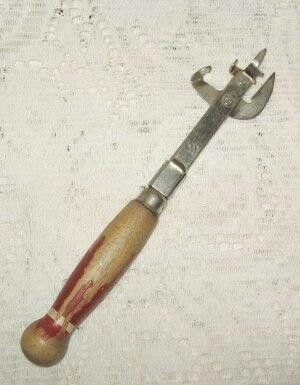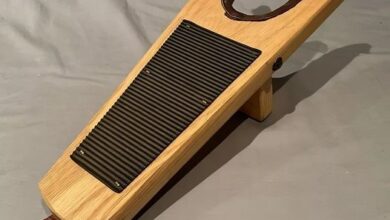The Simple Genius of the Vintage Can Opener: A Tool That Stood the Test of Time

ADVERTISEMENT
The Simple Genius of the Vintage Can Opener: A Tool That Stood the Test of Time
Introduction
In today’s age of sleek, electric gadgets, it’s easy to overlook the beauty and functionality of simpler tools from the past. The vintage can opener, with its wooden handle and metal mechanism, is one such tool—a humble yet ingenious device that has been a kitchen staple for over a century. This article explores the history, design, and enduring appeal of the vintage can opener, a tool that perfectly balances form and function.
ADVERTISEMENT
A Brief History of the Can Opener
The invention of the can opener is closely tied to the advent of canned food, which became popular in the early 19th century. The first cans were thick and cumbersome, requiring a hammer and chisel to open. As canned food became more widespread, the need for a more practical opening method became clear. The first can opener, patented in 1855 by Robert Yeates, was a simple blade that punctured the can. However, it wasn’t until 1870 that William Lyman invented the rotating wheel can opener, a design that remains the basis for most modern can openers.
The Design of the Vintage Can Opener
The vintage can opener, as seen in the image, is a prime example of early 20th-century design. It features a sturdy wooden handle, often polished smooth by years of use, and a metal blade attached to a lever mechanism. The handle provides a comfortable grip, while the metal blade is designed to pierce and cut through the metal of the can lid. The simplicity of the design is its genius—no electricity, batteries, or complicated mechanisms are required. It’s a tool that relies solely on human power and ingenuity.
Why the Vintage Can Opener Endures
ADVERTISEMENT
Despite the availability of electric can openers and other kitchen gadgets, the vintage can opener has never truly fallen out of favor. Its enduring appeal lies in its reliability, simplicity, and the nostalgia it evokes. For many, using a vintage can opener is a connection to the past—a reminder of a time when everyday tasks were accomplished with straightforward, well-made tools. Additionally, the durability of these can openers means that they can be passed down through generations, making them cherished heirlooms in many families.
The Art of Using a Manual Can Opener
Using a manual can opener, particularly a vintage one, requires a bit of technique and patience, but it’s a skill that can be easily mastered. The process of carefully aligning the blade with the can’s edge, applying just the right amount of pressure, and turning the handle is almost meditative. It’s a tactile experience that brings a sense of satisfaction—a small but meaningful accomplishment in the kitchen.
The Role of the Can Opener in Culinary History
The can opener, though a small and often overlooked tool, has played a significant role in culinary history. It made canned food accessible and convenient, allowing people to store and preserve food in ways that were previously impossible. During wars, natural disasters, and times of scarcity, the can opener was a lifeline, enabling access to essential nutrition. Even today, it remains an indispensable tool in kitchens around the world.
ADVERTISEMENT
Conclusion
The vintage can opener is more than just a kitchen tool—it’s a symbol of practical design, durability, and the human connection to the tools we use. While technology continues to evolve, there’s something reassuring about the simplicity and effectiveness of a well-made, manual device. The vintage can opener stands as a testament to the idea that sometimes, the best solutions are the simplest ones. It’s a tool that has stood the test of time and will likely continue to do so for generations to come.




